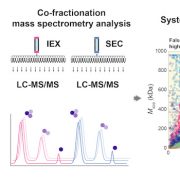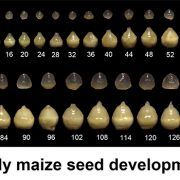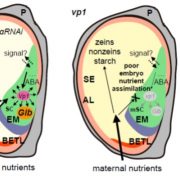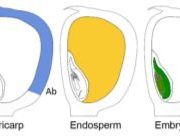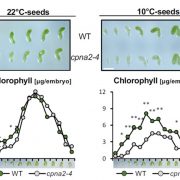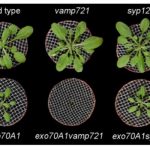SnRK1-ZmRFWD3-Opaque2: A Nexus of Seed Nutrient Accumulation and Diurnal Cycles
Plant seeds store nutrients in the form of protein, starch, and oil to support seed germination and seedling establishment. The seed nutrient reserves are supplied with carbon and nitrogen assimilated in vegetative tissues, where primary metabolism oscillates in a circadian manner (Farré and Weise, 2012). However, whether the nutrient accumulation in developing seeds is also tuned during the diurnal cycle remained unclear until now. In a recent study, Li et al. (2020) identified a signaling module at the nexus between nutrient accumulation in maize (Zea mays) seed and the diurnal cycle.
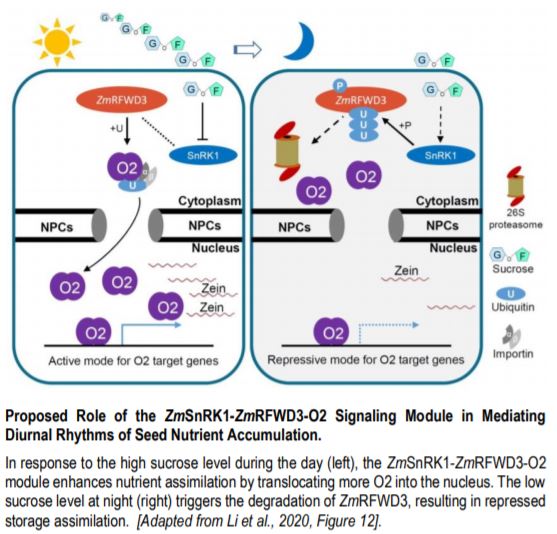 During seed development, photoassimilated carbon is translocated as sucrose from leaves to developing seeds, where it serves as the major carbon source for storage assimilation. The authors observed a diurnal rhythm for sucrose levels in developing seeds, with a higher concentration during the day than at night. The majority of nitrogen in maize endosperm is stored in zein proteins. The transcription of genes encoding zein proteins also showed diurnal oscillations, and zein genes expressed higher during the day are predominantly regulated by Opaque2 (O2), a transcription factor that coordinates carbon and nitrogen accumulation in maize endosperm (Zhang et al., 2016). Intriguingly, although the total protein content of O2 did not change over the diurnal cycle, the nuclear accumulation of O2 appeared to be enhanced during the day.
During seed development, photoassimilated carbon is translocated as sucrose from leaves to developing seeds, where it serves as the major carbon source for storage assimilation. The authors observed a diurnal rhythm for sucrose levels in developing seeds, with a higher concentration during the day than at night. The majority of nitrogen in maize endosperm is stored in zein proteins. The transcription of genes encoding zein proteins also showed diurnal oscillations, and zein genes expressed higher during the day are predominantly regulated by Opaque2 (O2), a transcription factor that coordinates carbon and nitrogen accumulation in maize endosperm (Zhang et al., 2016). Intriguingly, although the total protein content of O2 did not change over the diurnal cycle, the nuclear accumulation of O2 appeared to be enhanced during the day.
These observations raised the question: what is the molecular mechanism underlying the diurnal rhythm of O2 subcellular distribution? The authors discovered that O2 interacted with an E3 ubiquitin ligase, RING Finger and WD40 repeat 3 (ZmRFWD3), and that the interaction resulted in oligo-ubiquitination of O2. The translocation of O2 from the cytoplasm to its site of action, the nucleus, is mediated by maize Importin 1 (ZmIMP1). The ZmRFWD3-mediated ubiquitination of O2 enhanced the interaction of O2 with ZmIMP1, thereby promoting its nuclear localization. The diurnal oscillations of O2 nuclear accumulation and transcription of zein genes were weaker in developing seeds of the zmrfwd3 mutant, which further validated the role of ZmRFWD3 in modulating the observed diurnal rhythm in nutrient accumulation during maize seed development.
The next question to address was whether ZmRFWD3-regulated O2 activity is part of the sucrose signaling pathway. The authors showed that increased sucrose levels enhanced ZmRFWD3 accumulation and O2 activity in developing seeds. In addition, ZmRFWD3 interacted with the maize SNF1-related kinase α1-like 2 (ZmSnRK1), which is an energy sensor mediating metabolic responses to sucrose availability (Baena-Gonzalez et al., 2007). The ZmSnRK1-ZmRFWD3 interaction led to phosphorylation and degradation of ZmRFWD3. Thus, ZmSnRK1 responds to the diurnal oscillation of seed sucrose levels, negatively modulates ZmRFWD3-mediated O2 activity, and entrains a diurnal rhythm in seed nutrient assimilation.
Building on these findings, the authors propose a model by which seed nutrient assimilation is synchronized with the diurnal cycle through a sucrose-dependent ZmSnRK1-ZmRFWD3-O2 signaling module (see Figure). The oscillating changes in metabolism during the diurnal cycle are critical for plants to optimize their growth and development in coordination with a changing environment. The signaling module identified in this study sheds light on the regulatory mechanism of diurnal rhythms of seed metabolism and may play an important role in seed development. The components in this regulatory module represent potential targets for engineering crop seeds with desired nutrient composition.
Yingqi Cai
Biology Department, Brookhaven National Laboratory
ORCID: 0000-0002-0357-5809
REFERENCES
Baena-Gonzalez, E., Rolland, F., Thevelein, J.M., and Sheen, J. (2007). A central integrator of transcription networks in plant stress and energy signaling. Nature 448: 938-942.
Farré, E.M., and Weise, S.E. (2012). The interactions between the circadian clock and primary metabolism. Curr. Opin. Plant Biol. 15: 293-300.
Zhang, Z., Zheng, X., Yang, J., Messing, J., and Wu, Y. (2016). Maize endospermspecific transcription factors O2 and PBF network the regulation of protein and starch synthesis. Proc. Natl. Acad. Sci. USA 113:10842-10847.


